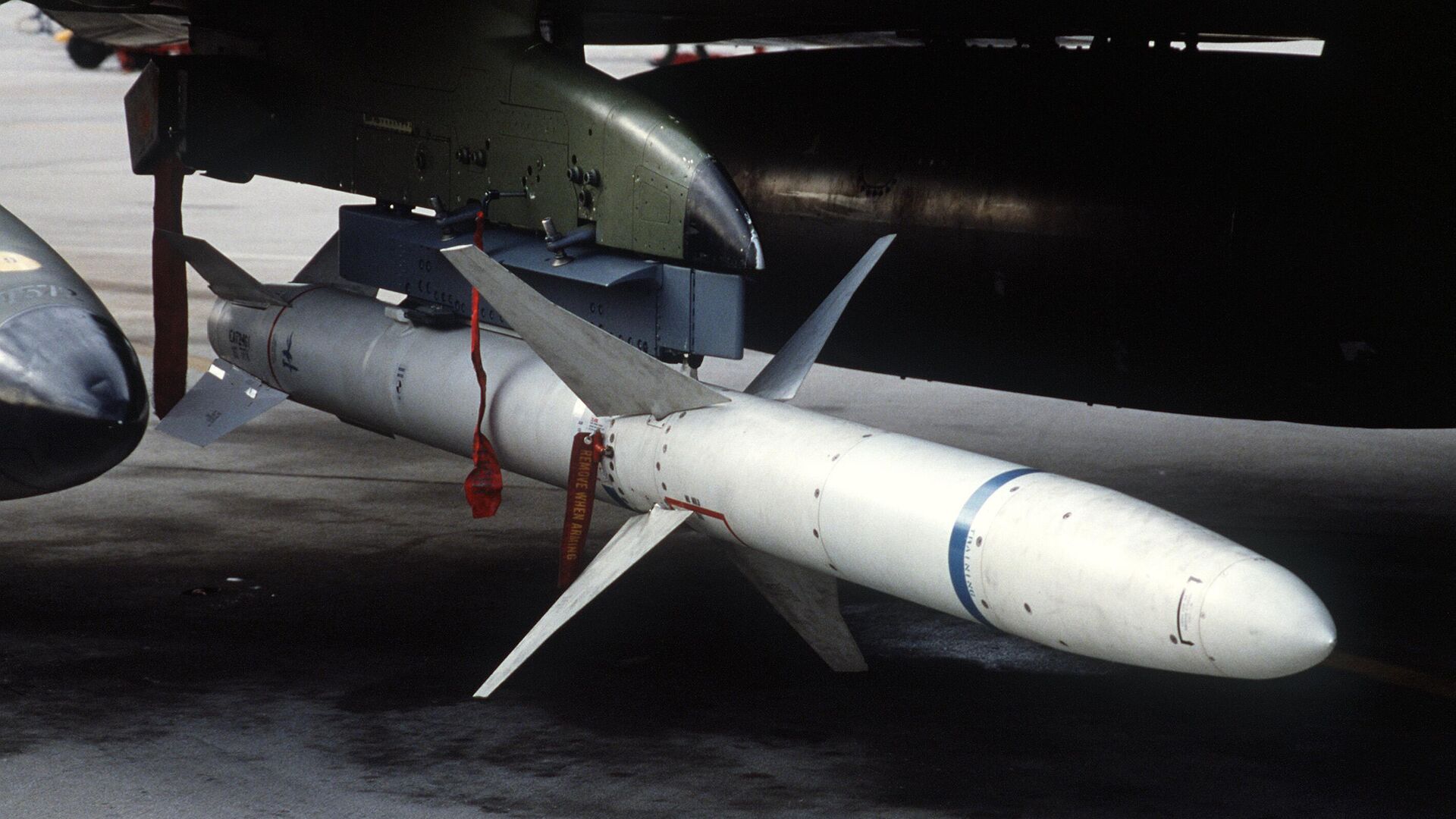US Navy Aims to Test-Fire Ground-Launched Version of AARGM-ER Anti-Radar Missile

© SSgt. Scott Stewart
Subscribe
Until photo evidence emerged, the US denied having equipped the Ukrainians with AGM-88 HARM anti-radar missiles, which could be used to target radar sites inside Russia. It’s unclear how, but Kiev has managed to get Soviet-era fighters, once thought incompatible with the missile’s technology, to carry and fire the HARM.
Having carried out four successful tests of the extended-range AGM-88 High-Speed Anti-Radiation Missile (HARM), dubbed the AARGM-ER, the US Navy is now preparing to test launching the missile from a ground-based site.
US Navy Capt. Alex Dutko, program manager for Naval Air Systems Command's (NAVAIR) Direct and Time Sensitive Strike office, told reporters earlier this week there would be “a demonstration here in the next several months."
The missile is used to strike enemy radar sites as part of a dangerous mission the Pentagon calls “wild weasel,” after the nimble rodent that goes into the den of its prey as it hunts. However, Soviet military doctrine and those of many former Soviet republics - such as Russia and Ukraine - don’t assign a special mission profile for anti-radar strikes. Other nations call this mission Suppression of Enemy Air Defenses (SEAD).
The baseline AGM-88 HARM is fast, reaching Mach 2, and has a range of roughly 150 kilometers, or 93 miles. However, the AARGM-ER purportedly doubles both its range and speed by adding a solid integrated rocket-ramjet, giving it a 300-kilometer (186-mile) range and near-hypersonic speed. The Navy has conducted four tests of the AARGM-ER since 2021.
According to media reports, the Navy did not clarify its method of surface launch, but it could potentially use existing truck-mounted missile launchers, a version of the Mk 41 Vertical Launch System used on US Navy warships, or even a launcher hidden inside a shipping container.
Interestingly, the Israeli Defense Forces (IDF) developed a system for firing the AGM-78 ARM, the HARM’s predecessor, from a truck-mounted launcher in the 1980s, following air defense trouble during the 1973 war.
US Air Force F-16 Falcons are often tasked with “wild weasel” missions today, but the AARGM-ER can be carried inside the internal weapons bay of both the F-22 Raptor and the A and C variants of the F-35 Joint Strike Fighter. The HARM was not designed to be fired from Soviet-built fighter jets, but Ukraine has succeeded at getting MiG-29 and Su-27 aircraft to do so, after the US began secretly supplying Kiev with the missiles last year.
The missile has the ability to be fired using existing data about radar emissions, using an aircraft’s targeting system, or by firing it and letting it detect the target itself.


